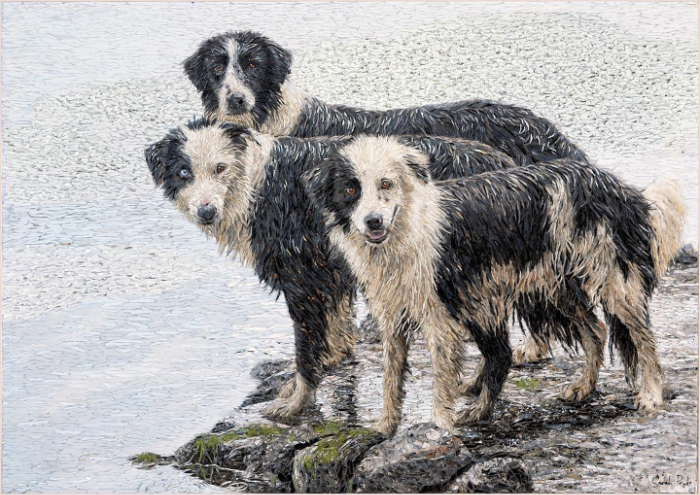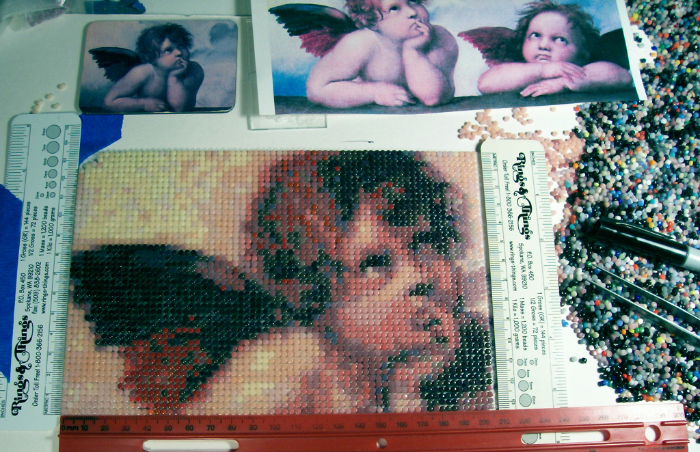
Passion projects
Veruska Vagen’s dot de verre technique fuses her love of painting, glass and art history, using tiny dots of coloured glass to create delicate artworks inspired by the painters of the past – and even a portrait of Dale Chihuly. Linda Banks finds out more.
What led you to start working with glass and which techniques do you prefer?
Painting was the medium of choice in college, for which I received a Bachelor of Fine Arts degree, with an emphasis on art history. Glass had always intrigued me, particularly stained glass, which I also felt drawn to. I had always wanted to find a way to incorporate those passions of painting, glass and art history, through some kind of homage to the three disciplines.
For years, sandblasted glass served as a working surface for enamelling and the process was incorporated on both flat and three-dimensional glass. But it wasn’t until discovering the material I use now (Wasser glass confetti) that everything really came together.
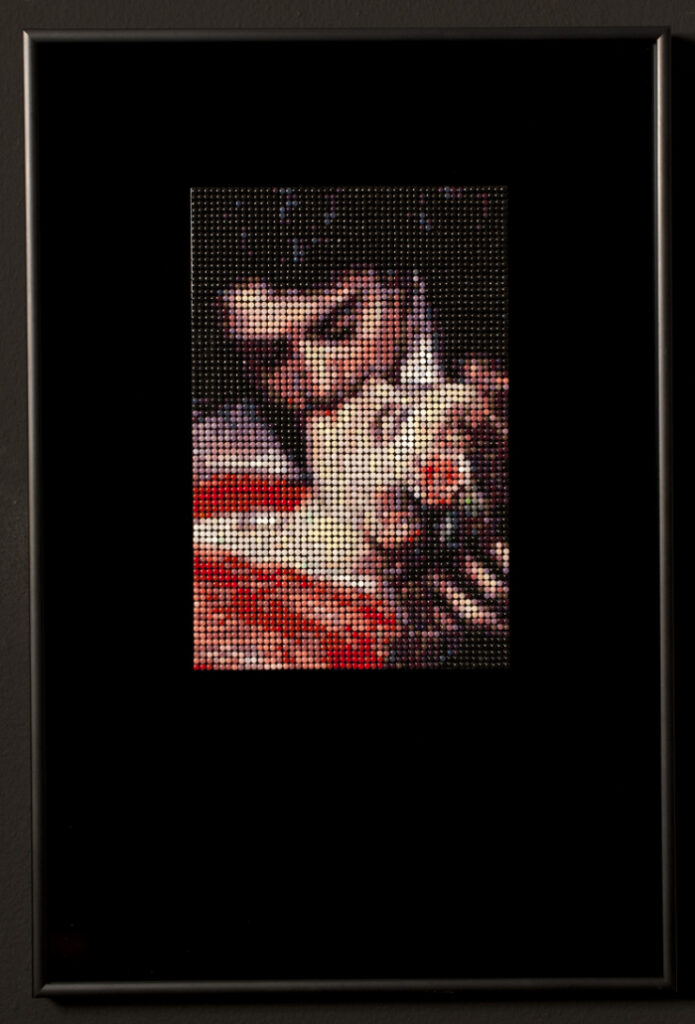
What is your creative approach and what inspires your work?
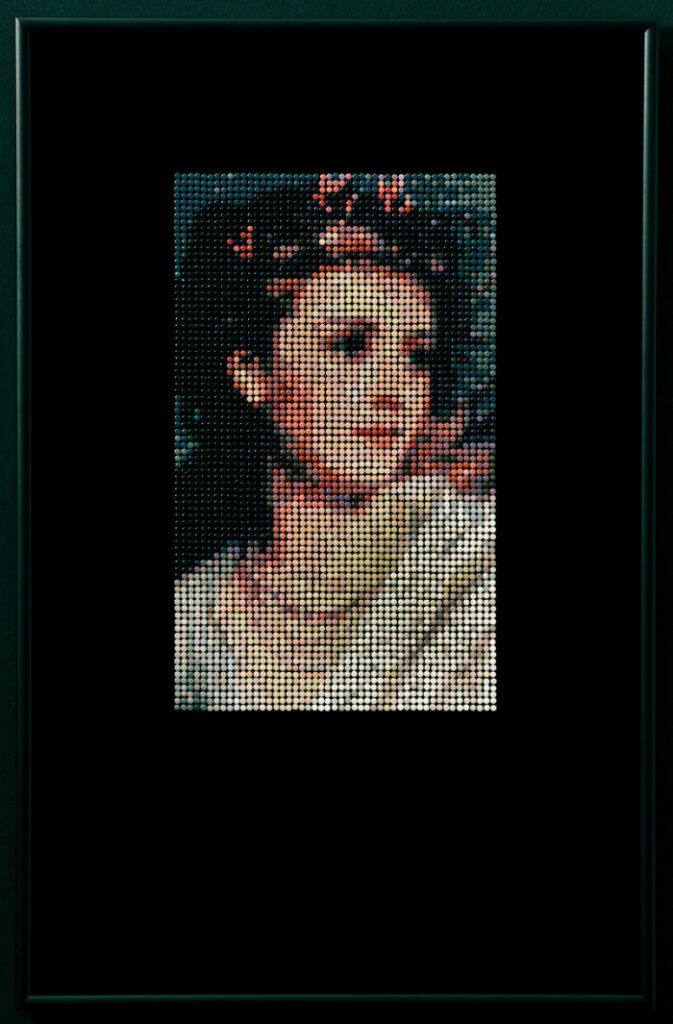
Just as plein air painters find inspiration in a specific landscape they wish to interpret, I tend to find intrigue within a particular artistic genre. One year it was focusing on the details of Pre-Raphaelite portraits that served to inspire; another year it was illustrations of women from the early 20th century. Once fully engaged I dive into learning everything possible about a specific period and aesthetic. I study the details of what was found to be compelling for that era and explore what makes it timeless today. Then I set out to illuminate such classics in a new format and way of seeing the images, through a mosaic of glass dots.
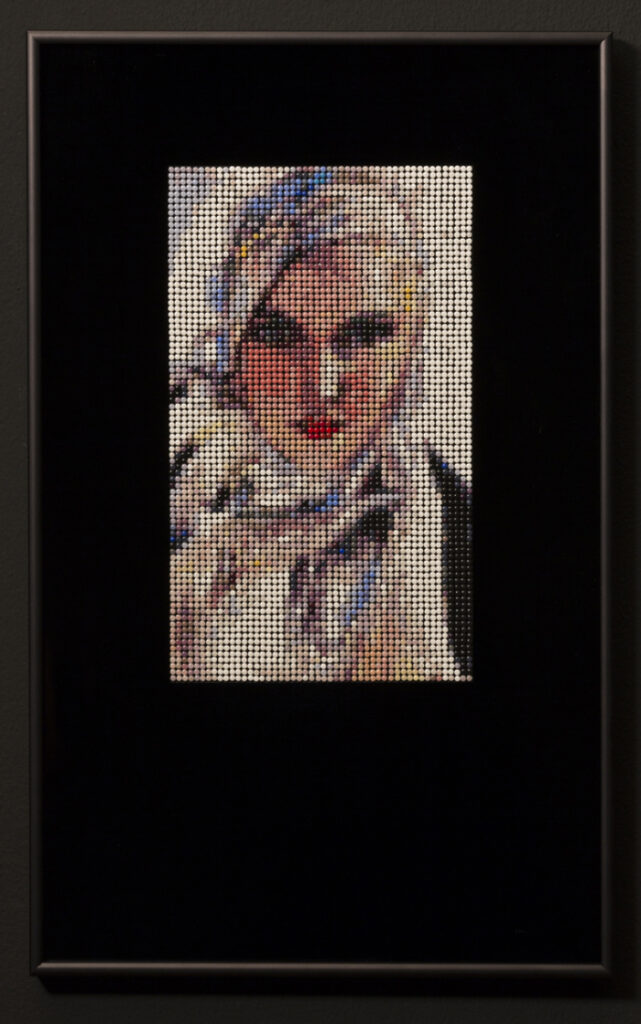
What message(s) do you want to convey through your art?
As with much of art, most of the pieces have come from a place of resonance in one way or another. Often there is some visceral connection with an original concept or artist from another place and time that seems relevant today. For example, in studying depictions of dogs in art history, I came across a sweet image of a sleeping terrier from an artist named Hall; a 1918 painting entitled ‘Peace’. A reference for this painting described the artist’s response marking the end of World War I and relaying the understandable emotions symbolised through his dog’s tranquil repose. I found this image very moving. One can imagine such a desire for solace today or in any other period of turbulence in human history.
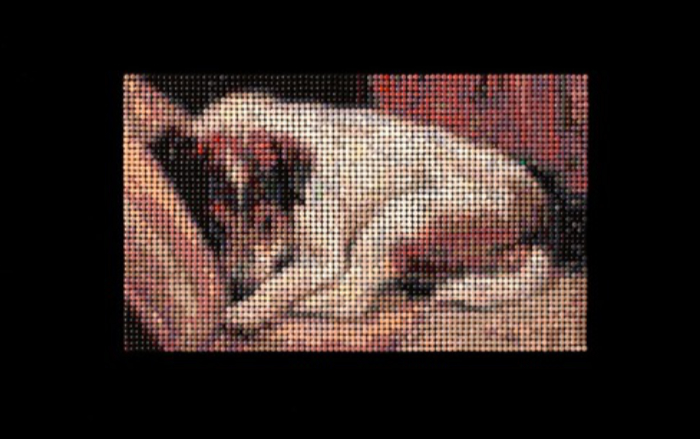
An artist always hopes that others can find meaning in any work of art that is personal to them yet transcends the greater human experience. My hope is that in revisiting a compelling image and paying homage to the original, I can share with others a moment of transcendence by reintroducing a beloved rendition through an abstraction of glass dots which, as with life in general, comes more into focus with a bit of distance. Hopefully the work can be a metaphor for seeing art and the world in a whole new way. It is also important to me to be sensitive to the issue of appropriation and credit the source of the art whenever possible and the era in history in which it was created.
What is your favourite tool or piece of equipment and why?
Hands down it is a decades-old pair of tweezers I cannot live without. I’ve literally had nightmares about losing those tweezers and panic any time I misplace them in the studio. They are quite long and I’ve used them for so many years that the metal is worn down where the finger grips are. The tweezers have the perfect tension for picking up 3mm glass dots and no other tool I have ever tried has worked with such ease. I could not make the pieces I do without them. The tweezers are so old I can’t even remember where they came from but I can honestly say they are irreplaceable.
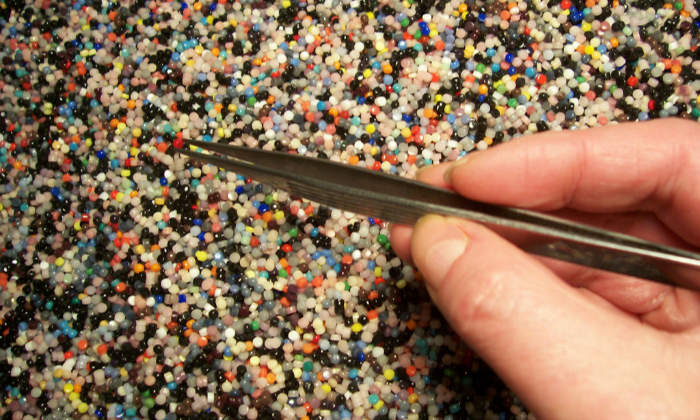
Do you have a favourite piece you have made? Why is it your favourite?
I think it was Picasso who once said his best painting was the next one and I rather like that thought. It’s hard to pick a favourite, though there are some pieces that brought great joy while making them. I remember smiling the entire time while working on a zebra mosaic inspired by a 19th century natural history illustration. Depicting stripes with dots was like creating visual jazz and I have fond memories of making that particular piece, among others. I suppose the most challenging pieces sometimes end up as favourites simply because of one’s heartfelt experience in creating them.
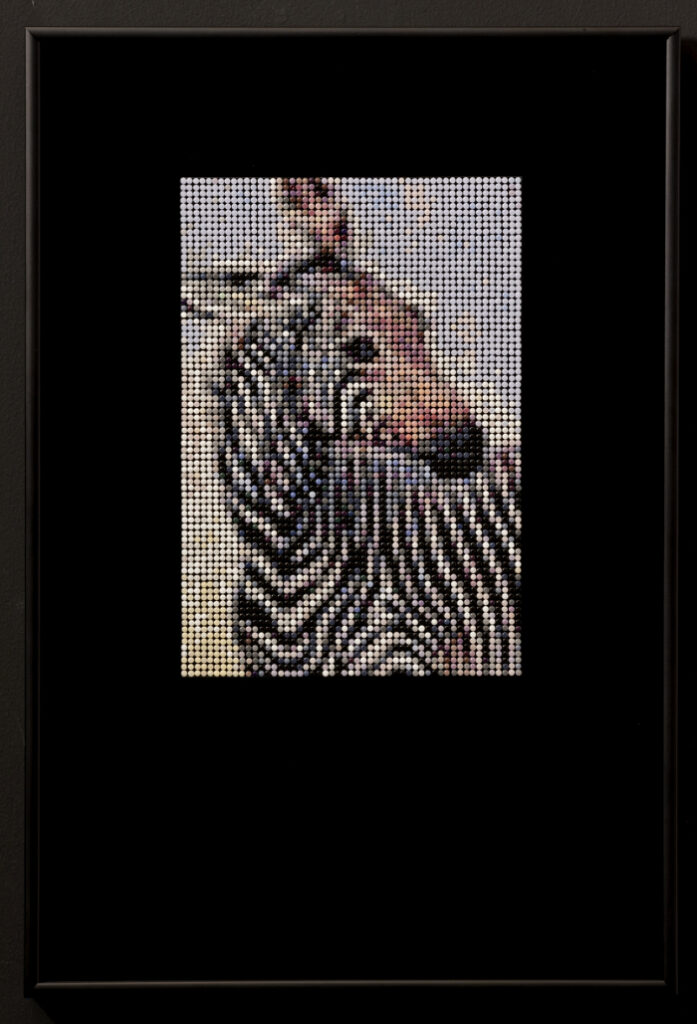
Where do you show and sell your work?
I’m honoured to be a part of several museum exhibitions at present though have a number of galleries representing my work as well, listed on my website.
What advice would you give to someone starting out on a career in glass?
Focus on making great work first. Find a way to support yourself while developing your art and find your artistic voice. Once you have found that voice, something uniquely your own, you will be ready to launch your career.
Do you have a career highlight?
One highlight was the first mosaic piece I made using the newly discovered glass dots, 30 years ago before pixeled representations became commonplace in the computer age. It was an experiment, a portrait of glass master Dale Chihuly done in rows of dots and using a ruler (a method I still use today). The kiln firing went well with the dots tack-fusing nicely without melting together, so I decided to donate it to the annual Pilchuck Glass School Auction fundraiser. To my utter delight, Dale was there and bid on the piece, which started a bidding war. The piece went to six times over value before the gavel went down and Dale went home with his portrait. There could not have been a greater incentive for me to continue exploring this new technique. I owe much of my career to Dale’s vote of confidence, and to others who believed in the work, for which I feel forever blessed and grateful.
About the artist
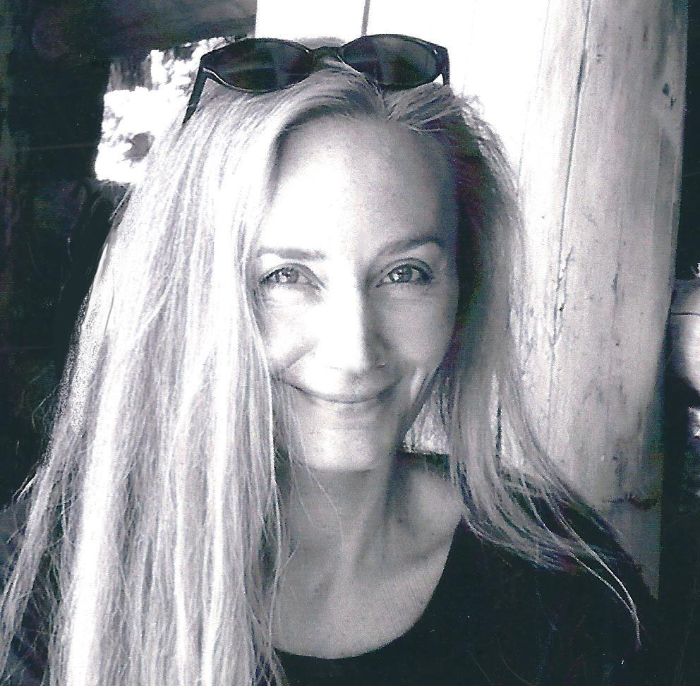
Originally a painter, Veruska Vagen spent years living in the Southwest US, where she maintained a studio and worked in oil, watercolour, glass and mixed media. The course of Vagen’s life changed when her glass enamel work brought her to the renowned Pilchuck Glass School in Stanwood, Washington. She moved to Stanwood in 1993 and served 12 years with the William Morris Studio, during which time she developed a unique mosaic technique called dot de verre.
Find out more about Veruska Vagen, her technique and her work via her website.
Main feature image: Veruska Vagen’s glass technique involves the careful placement of thousands of tiny glass dots to build up the design she is creating.
